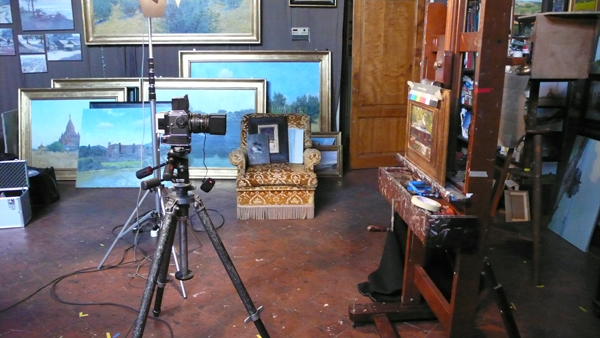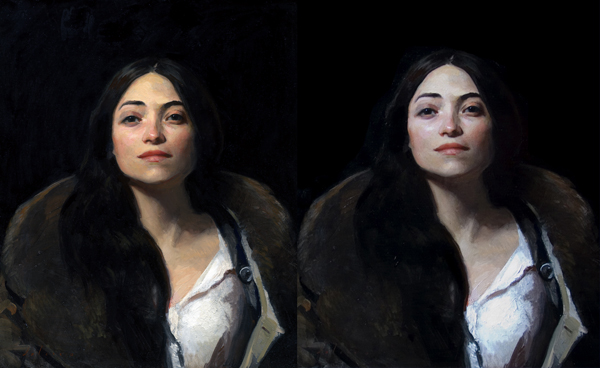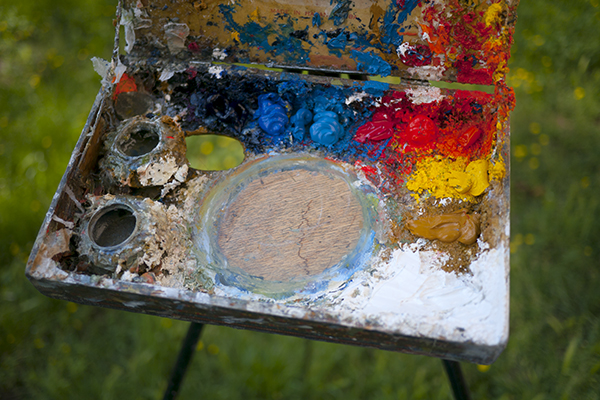
The set-up.
This week I had a professional photographic studio (Industrial Foto) come to photograph my latest paintings for a catalog. It was interesting to see their set up, and the results are so much better than what I can do with my Panasonic Lumix LX2. It was very expensive though, for a little more money I could have bought a new entry level DSLR. The photographers used a Hasselblad 555 ELD with an Imacon ixpress digital back. They explained that the cameras need to be upgraded less often than the digital processors, so this way they can upgrade each separately. The whole thing was hooked up to a Macbook Pro and everything was done from the computer (checking the light and releasing the shutter) with the proprietary Imacon software.

Industrialfoto running the shoot from a Macbook
They used artificial light and some of the photos came out with a yellow tint. I can color correct them myself but I would have preferred to work from the RAW camera files rather than the TIFFs they sent me.
For the internet the high-resolution photos really don’t make much of a difference, here is a side by side comparison between my little Panasonic and their system:

The Hasselblad is on the left, my Panasonic is on the right.


